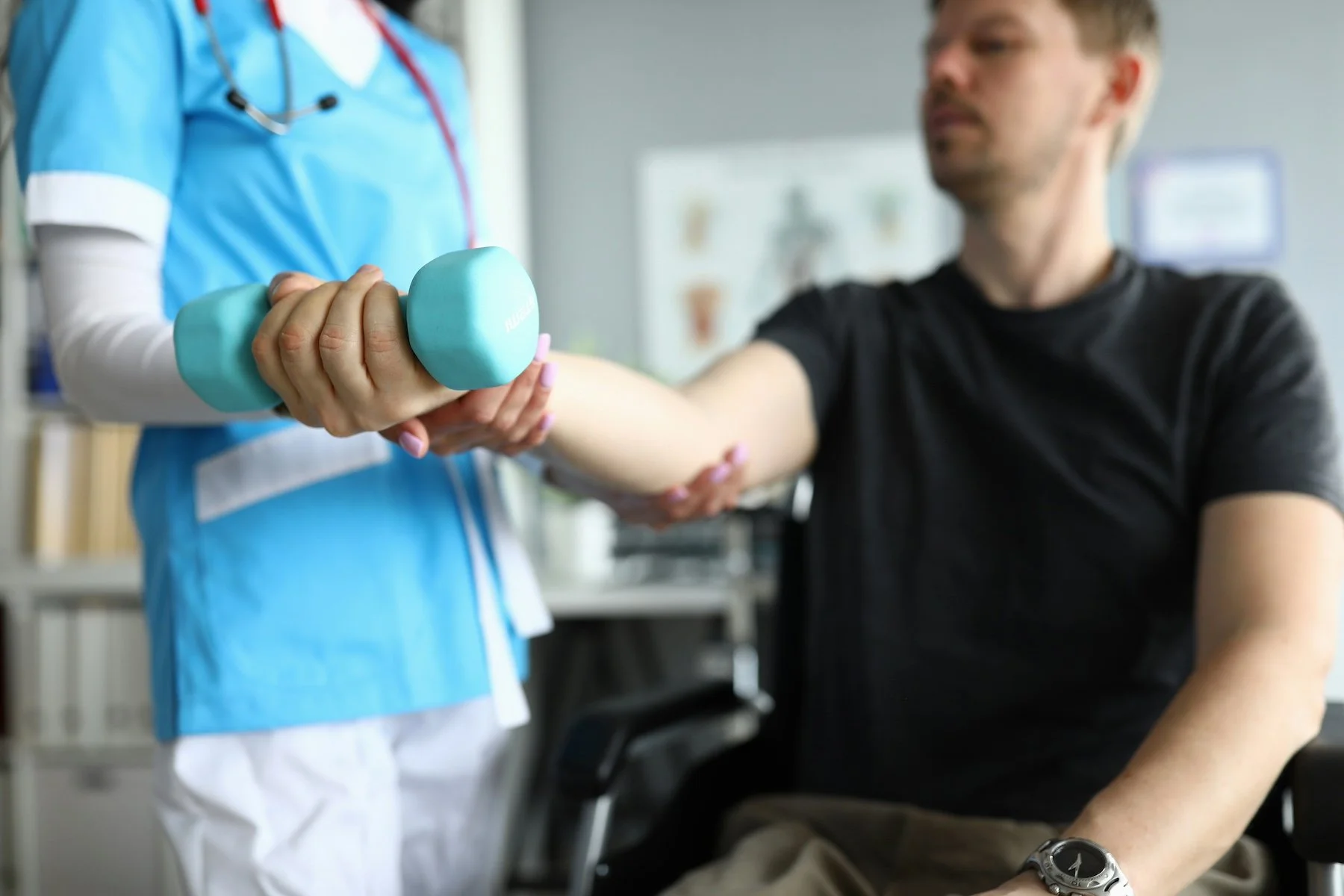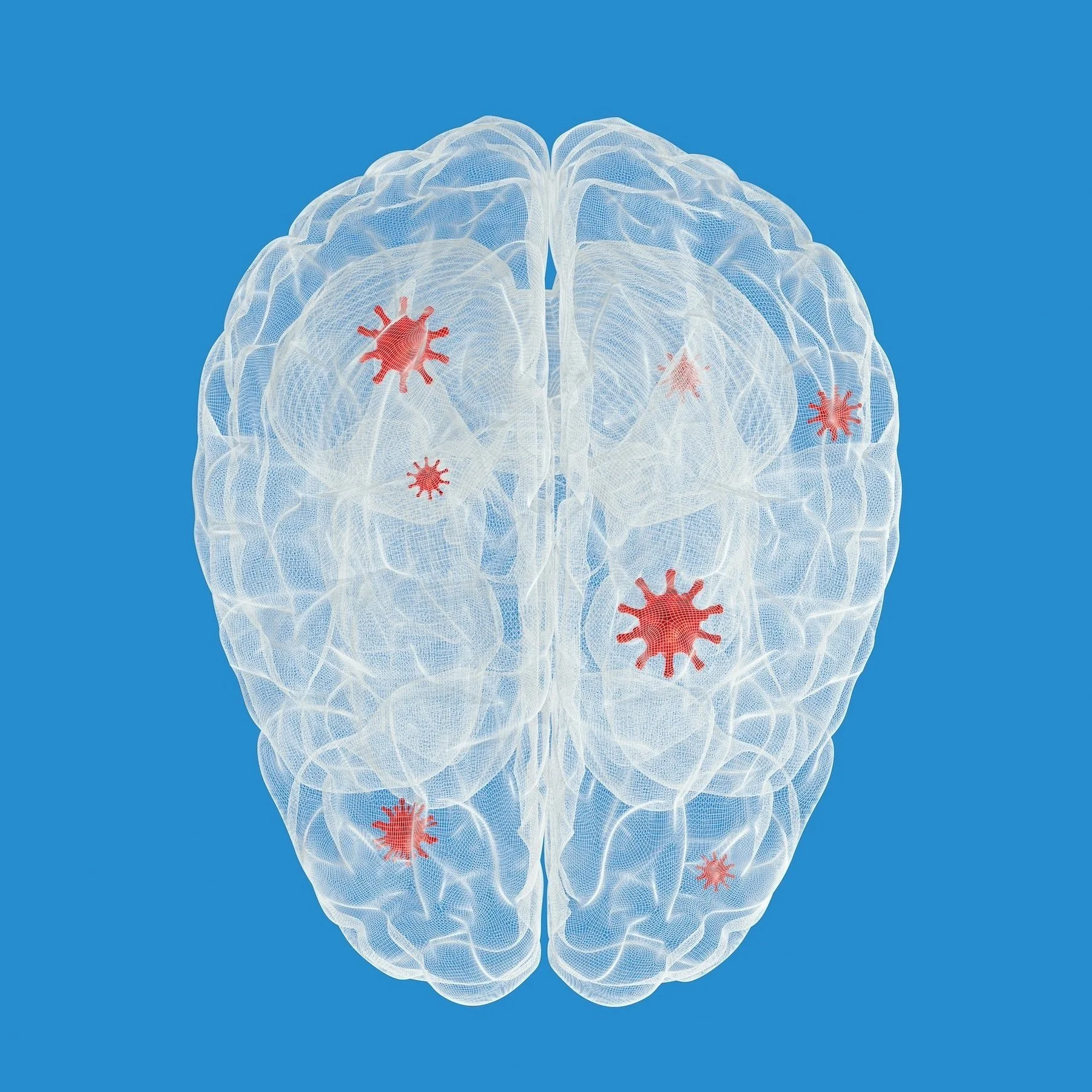Parkinson's Management: Why Exercise Matters
3 Major Benefits of Exercise for Individuals Managing Parkinson's Disease
By Lily Rawnsley, BSc., MS - Moore MyoWorx Denver
By focusing on improving muscle strength for people with Parkinson’s Disease, we help increase flexibility and enhance the ability to perform daily activities with greater ease and comfort.
Living with Parkinson's Disease is a journey of continuous adaptation and resilience.
As a progressive neurological disorder, Parkinson’s presents unique challenges that evolve over time, affecting movement, balance, and even cognitive functions. It results from the degeneration of dopamine-producing neurons in the brain, leading to motor and non-motor symptoms that worsen over time. Individuals with Parkinson's often face daily hurdles in performing once-routine tasks, from buttoning a shirt to walking across a room.
Symptoms usually begin gradually and worsen over time, and can include:
Unintended or uncontrollable movements
Shaking, or tremors
Stiffness, or rigidity
Difficulty with balance and coordination
Slow movement
Difficulty speaking, swallowing, or chewing
Urinary problems or constipation
Skin problems
Depression and other emotional changes
Cognitive disturbances, such as slowed cognitive processing speed, executive dysfunction, and disrupted time perception
However, many people with Parkinson's discover inner strength they never knew they had, developing new coping strategies and finding support in their communities.
Moore MyoWorx designs personalized programs that address the many symptoms associated with Parkinson's Disease that come from sources outside of the brain such as blood flow restriction and muscular tension throughout the muscles that support your spine. By addressing these, patients are able to improve mobility, balance, vision and cognition allowing for improved function and increased dopamine release. This harnesses our bodies' own ability to heal itself and improve quality of life, without a dependence on significant surgeries or invasive therapies.
Does exercise help those with Parkinson’s? The answer is an emphatic YES!
While anyone’s life can be improved with exercise, it is especially crucial for people with Parkinson's as it helps improve mobility, balance, and flexibility, which can mitigate some of the motor symptoms associated with the disease. Regular physical activity also supports overall brain health, potentially slowing the progression of Parkinson's.
We dive into three key benefits of exercise for those suffering from Parkinson’s Disease…
EXERCISE IMPROVES OVERALL FUNCTION
Overall physical function encompasses muscle strength, flexibility, and balance—all crucial elements for those with Parkinson's Disease. As Parkinson's can lead to muscle stiffness and balance issues, everyday tasks such as walking become increasingly challenging.
By focusing on improving muscle strength, we help increase flexibility and enhance the ability to perform daily activities with greater ease and comfort. Our tailored exercise programs aim to counteract these symptoms, allowing people to maintain independence and improve their quality of life. Strong muscles provide better support for joints, aiding in smoother movements and reducing the risk of falls.
Strength training should be part of a physical therapy routine 2-3 times per week focusing on a different muscle group. These strength exercises could be:
Bicep curls
Tricep dips or kickbacks
Standard or assisted sit ups
Squats or stand ups (repeated standing from a chair seated position)
Leg presses
Additionally, increased flexibility helps combat the rigidity often associated with Parkinson's, promoting better posture and range of motion. Together, these improvements in physical function contribute to a more active and comfortable lifestyle for individuals managing Parkinson's disease. Balance and agility activities conducted during physical therapy are vital to strengthen the ankles and improve the person’s ability to “catch themselves” in a fall.
Here are some activities which can improve movement overall in addition to strengthening smaller muscle groups used in balance:
Tai Chi
Yoga
Pilates
Dancing
Dopamine, often called the 'feel-good' neurotransmitter, is precisely what individuals with Parkinson's lack. By naturally boosting dopamine levels, exercise leads to more positive outlooks and increased feelings of happiness.
EXERCISE CAN HELP CONTROL SYMPTOMS
Exercise plays a crucial role in alleviating various Parkinson's symptoms, particularly tremors and stiffness. Regular physical activity can help reduce neurological impingement that causes tremors, offering relief and improved control over movements. Consistent body movement increases blood flow throughout the body, which helps decrease stiffness and increase a person's range of motion. This improved flexibility can make daily tasks easier and more comfortable to perform.
Physical activity has a direct positive impact on mood and mental well-being. It's particularly effective in helping lower symptoms of depression, which is common among individuals with Parkinson's. The mechanism behind this mood boost is fascinating: exercise increases the level of dopamine a person produces. Dopamine, often called the 'feel-good' neurotransmitter, is precisely what individuals with Parkinson's lack. By naturally boosting dopamine levels, exercise leads to more positive outlooks and increased feelings of happiness.
Aerobic exercise or “cardio” includes continuous movement that increases the heart rate steadily overtime. As the heart rate elevates during cardiovascular activities, the brain responds by releasing more dopamine, leading to improved mood, increased focus, and a general sense of well-being. Cardio has been widely studied as an excellent way to increase dopamine levels. One key to successful cardio is to find an enjoyed activity such as:
Walking
Swimming
Cycling
Rowing
Regular cardio workouts can lead to long-term increases in dopamine sensitivity, potentially enhancing the brain's reward system and contributing to sustained mood improvements even beyond exercise sessions.
By focusing on exercise therapies, Moore MyoWorx empowers patients to take control of their chronic conditions such as Parkinson’s Disease.
EXERCISE ENHANCES QUALITY OF LIFE
Regular exercise and movement have far-reaching effects on the overall quality of life for individuals with Parkinson's disease. Physical activity can significantly improve one's mood (as mentioned above). As strength and mobility increase, individuals often feel more confident and motivated to engage in home and social activities. This increased participation can lead to a more fulfilling and active lifestyle.
Exercise also plays a crucial role in improving sleep quality. Physical activity stimulates the production of melatonin, the hormone responsible for regulating sleep-wake cycles. Higher melatonin levels make it easier for individuals to fall asleep and experience more restful sleep throughout the night. Better sleep contributes to improved daytime energy levels and overall well-being.
In some cases, consistent exercise can potentially reduce reliance on medication. As physical function improves and symptoms become more manageable through regular activity, some individuals may find they need less medication to control their symptoms. By addressing physical symptoms, improving sleep and potentially reducing medication needs, exercise becomes a powerful tool in enhancing overall quality of life for individuals with Parkinson's disease.
Moore MyoWorx recognizes the power of targeted physical activity in Parkinson's management. Our specialized programs are designed to harness these benefits, providing personalized exercise regimens that address each patient's unique needs. By focusing on non-invasive, movement-based therapies, Moore MyoWorx empowers patients to take control of their condition, offering a path to improved function and well-being without relying solely on medications or surgical interventions.
Through our expert guidance and supportive approach, we help those suffering from Parkinson's to unlock the full potential of exercise as a powerful tool in their journey towards better health and increased life satisfaction.
If you or someone you know suffers from Parkinson’s Disease, please share this information with them and encourage them to reach out to us at Moore Myoworx! Contact our team today and we can begin your recovery together.
We specialize in helping those with chronic pain get back to the lives they love in our Centennial, Colorado clinic - the first of its kind in the United States!
Learn about the conditions we specialize in and more about our history and 35+ years of patient successes. Schedule a free introductory session with our Denver clinic today by calling us at (720) 663-9331 or by contacting us here.
More from the Moore MyoWorx Blog:
Lily Rawnsley is a Colorado native, and completed both her undergraduate and Master's degree at the University of Wisconsin at Madison. She got her undergraduate degree in Rehabilitation Psychology and her Masters in Sports Leadership. During her time at Madison she was a member of the University’s Varsity soccer team for 5 years. She has experience working with people with chronic illness and disabilities in personal care settings. Lily strives to create positive relationships with patients to encourage a safe and comfortable space for them to heal.






